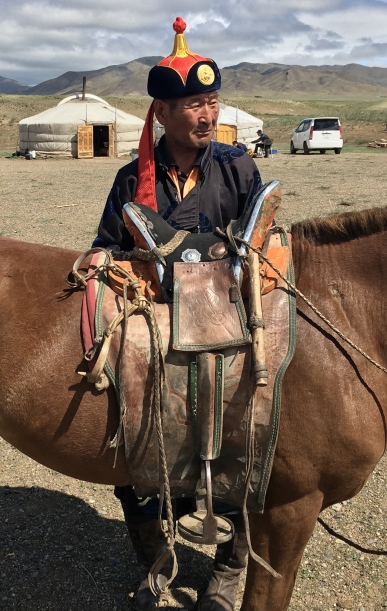
Mongolians have been riding horses for thousands of years. The earliest known wood-frame saddle found in Mongolia dates to the 4th Century AD. The basic shape of the Mongolian saddle has changed little since then. There are numerous styles of saddle in Mongolia, usually with each different tribe or region having a distinctive shape. There is a famous Mongolian proverb that says, “A Mongol without a horse is like a bird without wings.” Horses play an important role in the lives of Mongolians. Horses are ridden and used for herding livestock. They also provide meat and mares are milked in the summer. Large quantities of fermented mare’s milk are consumed by Mongolians. They claim it is good for you so I often drank a lot. It is a bit of an acquired taste. I have been taking photos of Mongolian saddles since I first visited the country thirty-one years ago. Included in this exhibit are saddles I have examined over the years. I’ve also included a few photos of the cowboy saddles I've had custom-made to use in Mongolia.
Horses have significant cultural value for Mongolians. This is well displayed during the annual summer festival, or “Nadaam.” Horse races are held everywhere in Mongolia during the Nadaam – a combination of the Kentucky Derby, a county fair, and a rodeo. Every community in Mongolia celebrates its best horses. Many of the small towns in rural areas have statues erected of horses that won races. Horsemen who train winning racehorses are also feted with medals and prizes during the Nadaam festival.
The concept of “khiimori” or Wind Horse is often used in Mongolia. “Khiimori “is viewed as a powerful protective force or guardian spirit that can collect good energy that can bring happiness, wealth, and good luck in the form of a horse that travels through time and space very fast to collect everything good for you. Mongolians will say “He is with Wind Horse” or “He is with horse.” to describe someone very successful. Mongolians often place a small “Khiimori” statue at the north side of the felt tent, (“ger”) where the light and color will generate good energy and a warm atmosphere.
wildyakman@gmail.com
Make Comment/View Comments